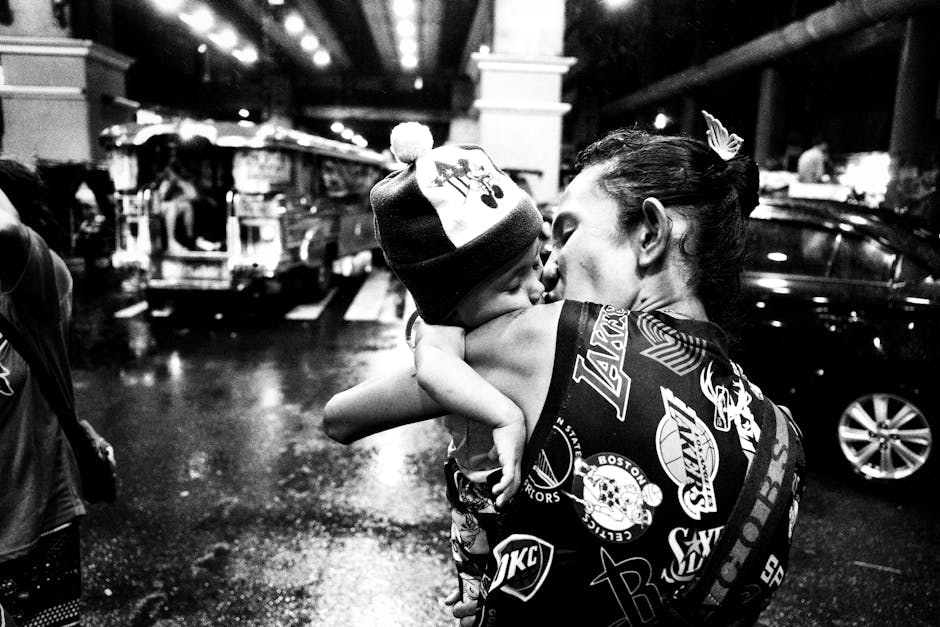Romance can feel like a tidal pull – heady, thrilling, and sometimes blinding – which is why many people stumble when sorting out love vs attachment. The two can appear similar from the outside, yet they behave differently once you step inside a real relationship. By tracing how each one moves through daily life, boundaries, and choice, you can tell whether your connection breathes freely or clings tightly. This exploration keeps the warmth of devotion while asking careful questions about patterns that might have slipped in unnoticed. In short, love vs attachment is not a debate about who cares more, but about how that caring shows up when tested by time and change.
Why these feelings get mixed up so easily
New relationships often come with a rush of novelty and reward – messages that arrive quickly, laughs that land, glances that linger. In that glow, love vs attachment can blur, because both can produce the same quickened heartbeat and the same impulse to stay close. The difference emerges in what happens when closeness is interrupted. Love makes room for two full lives and trusts the return; attachment narrows the frame and demands constant contact to feel safe. Both want connection, yet only one respects the distance that allows people to remain themselves.
Another reason love vs attachment confuses us is language. We use the word “need” for everything from true support to momentary craving. The word feels dramatic, but drama is not a diagnostic tool. What helps is noticing how your “need” behaves: Does it open you to generosity and patience, or does it pressure your partner to perform? When the same three letters begin to control your schedule, your tone, and your thoughts, you are likely operating from attachment rather than love.

What love feels like in practice
Love stabilizes rather than destabilizes. It is still passionate – it laughs loudly and longs sincerely – but it does not erase who you are. In love, you keep friends, hobbies, and purpose, because the relationship contributes to your identity rather than replacing it. The day-to-day look of love is surprisingly ordinary: check-ins that are kind rather than compulsory, plans that include “you” and “we,” and conflicts that aim for repair instead of victory. In this light, love vs attachment becomes a question about freedom. Love’s version of closeness is chosen repeatedly, not enforced.
Love also adjusts when reality changes. A delayed flight, a busy season at work, a family emergency – each demands flexibility. Love practices flexibility without spinning frightening stories. It trusts that being apart for a night, a week, or a season does not erase the bond. That trust does not depend on constant proof; it is grounded in a wider view of the person beside you and the life you are building together.
What attachment feels like when it tightens
Attachment, by itself, is not the enemy – some attachment is natural because humans bond. Problems appear when attachment becomes the only tool in the kit. Then the mind starts scanning for threats, measuring how long a message takes to arrive, and reading meaning into silence that does not exist. In that mode, love vs attachment reveals its fault line: the relationship becomes a security project. You might find yourself checking, re-checking, and rehearsing scenarios that inflate anxiety rather than soothe it.

Another version of attachment is quieter. The thrill fades, routines take over, and you stay because leaving seems inconvenient. This form of attachment is not dramatic – it is heavy. Days line up predictably, and although the partnership is polite, it no longer inspires you to show up as your best self. Here, love vs attachment is about habit; the connection persists because it is familiar, not because it is alive.
Where they overlap – and where they diverge
Because love includes a healthy bond, it can look like attachment at first glance. Both want proximity; both miss a partner who is away. The split appears in motive and method. Love seeks your partner’s good even when it costs you comfort – attachment seeks comfort even when it costs your partner their good. Love leaves breathing room; attachment tries to acquire oxygen by holding tighter. Once you watch how decisions are made – whether they are generous or possessive – the love vs attachment difference becomes clearer.
Early signals that you might be confusing one for the other
It helps to examine daily patterns. The following signs do not “diagnose” anything – they invite reflection. Read them not as verdicts but as prompts for honest self-assessment about love vs attachment.

- You notice anxiety spike when your partner is unavailable, and the anxiety eases only after you get reassurance rather than after you take a breath and wait.
- Your social world has shrunk; invitations from friends feel like obstacles instead of opportunities, because they pull you away from constant proximity.
- Small schedule changes feel like personal slights – a meeting runs long, a train is delayed – and you interpret them as lack of caring rather than ordinary life.
- You review past conversations looking for hidden meanings, as if love must pass a courtroom standard every day to deserve trust.
- The relationship relies on the same scripts – the same restaurant, the same conversations – not because they are cherished traditions but because change feels threatening.
- During conflicts, your goal is relief from discomfort rather than understanding. Apologies become bargaining chips rather than pathways to repair.
- You picture the future mostly as protection against loss – “If we move in, I’ll worry less” – instead of as a canvas for shared growth.
- Your sense of self dims. The activities that once energized you now feel optional, and the relationship becomes your only source of meaning.
When attachment crosses into control
Control rarely announces itself. It arrives disguised as care – “I just want to make sure you’re safe” – but soon sets rules about where your partner can go, when they should text, or who they may see. In this terrain, love vs attachment is not abstract. It lives in whether you celebrate your partner’s independence or treat it as a threat. If you track their movements, demand instant replies, or bristle at spontaneous plans with friends, the issue is not passion – it is control. Love can include strong preference; it cannot include coercion.
The antidote is trust built through consistent behavior, not surveillance. Trust says, “Enjoy your evening; can’t wait to hear about it tomorrow.” It knows that time apart creates stories to bring back to the table. Attachment answers, “Send pictures so I know you’re really there.” That demand may soothe in the moment, but it teaches dependence rather than confidence. Over time, the dynamic erodes affection – the very thing the control was meant to protect.
If you are staying mostly out of habit
There is a quieter struggle where love vs attachment plays out: you stay because leaving feels like pulling up old roots. Shared logistics, familiar routines, and a well-worn couch can masquerade as devotion. Habit supplies stability, but it cannot generate vitality. If the bond is running on autopilot, take inventory. Are you choosing this person today, or simply maintaining yesterday’s choice to avoid disruption? Habit is comfortable – but comfort without aliveness is a slow drift away from yourself.
Honesty here is not cruelty. It is respect. If you know the connection has thinned to polite co-existence, remaining in place blocks both of you from relationships that fit better. Love vs attachment becomes a question of courage – the bravery to name what is true without turning anyone into a villain.
Healthy bonding inside a loving relationship
Attachment is not the enemy when it takes its rightful place. In a healthy bond, you feel magnetically drawn to your partner, you miss them during absence, and reunion feels sweet. Yet you do not collapse when apart. You eat, sleep, and handle responsibilities. You can hold their image in your mind without needing constant proof they still care. This is the sweet spot in love vs attachment: the relationship is an anchor you choose to carry, not a weight that drags you under.
Healthy bonding shows up as encouragement for separate interests – a weekly game night, a morning run, time with family – because those activities bring back energy and stories. The partnership becomes a place of return rather than a gate that locks from the inside. You are together not to fill emptiness, but to multiply fullness.
A reflection inventory for clarity
Use questions that reveal patterns rather than chasing a perfect definition. The point is not to win an argument about labels; it is to see how your connection behaves across ordinary weeks. Let love vs attachment guide your attention as you consider the prompts below.
- When plans shift, do you ask curious questions first, or do you accuse and demand explanations?
- Do you delay important personal goals because you worry they will conflict with your partner’s availability?
- When you feel jealous, do you share the feeling and co-create boundaries, or do you attempt to restrict and monitor?
- Are apologies tools for repair, or do they become currency exchanged to buy temporary calm?
- Do you feel proud of your partner’s growth even when it stretches your comfort, or do you resent the stretch?
- Do you make room for silence – the ordinary quiet of two people doing different things – or do you fill every gap with reassurance-seeking?
- When you imagine the future, do you picture shared projects and mutual flourishing, or do you picture safety from fear?
- After time apart, do you return with stories and gratitude, or with audits and tests?
Resetting the balance when things feel off
If your answers lean toward pressure and fear, you are not doomed – you are informed. The work is to reopen space. Start with small agreements: how often to check in during busy days, what events you will attend together, and which nights are reserved for individual plans. These agreements are not prison walls – they are trail markers that reduce uncertainty. In the conversation itself, speak from experience rather than accusation. “I feel panicky when texts slow down” leads to collaboration; “You never text me” leads to defense.
Next, revive parts of yourself that went quiet. The more your life contains multiple sources of meaning, the less your relationship must carry the burden of supplying all of it. Rediscover friends, study something new, return to a hobby, volunteer. Paradoxically, this expansion strengthens love – because love thrives when two whole people meet in the middle. This is the living answer to love vs attachment: you do not shrink to fit; you grow to give.
Another recalibration is to practice waiting without spiraling. If a message takes longer than usual, notice the story your mind starts writing and choose a different one. Replace “They do not care” with “Life sometimes gets busy – I’ll check back later.” This is not denial; it is perspective. Over time, your nervous system learns a new pattern: patience is safe.
Handling the urge to control
When control urges appear, name them without shame: “I want to check their location again.” Then ask what the urge is trying to secure – often it is comfort, not truth. If there is a real boundary to discuss, discuss it. If it is anxiety seeking a quick fix, give yourself a slower fix – a walk, a journal entry, a call to a friend. Love vs attachment becomes tangible here: love chooses connection through conversation; attachment tries to manufacture certainty through rules.
If you have crossed lines – reading private messages, issuing ultimatums – repair begins with accountability. Own choices, name impact, and propose new agreements. Repair is not groveling – it is grown-up maintenance on a connection you value. If both partners want to continue, the relationship can become stronger precisely because the two of you chose transparency over tactics.
Staying when the spark is gone – or choosing to part kindly
Sometimes the hardest truth in love vs attachment is that the caring remains but the romance has thinned. In that case, kind endings are better than slow erosion. Talk honestly about what has changed. If both of you want to rebuild, treat the relationship like a fresh project rather than an old obligation – new dates, new conversations, new rituals. If only one of you wants to rebuild, respect that mismatch. Ending with respect is not failure; it is fidelity to reality.
Parting kindly means acknowledging what was good. Shared memories do not become lies just because a season ends. Gratitude softens grief and helps both people carry forward lessons rather than resentments. When love vs attachment is navigated with care, even endings can be honorable chapters rather than scenes of blame.
Choosing generous definitions of closeness
Closeness is not measured by how little space you allow between you; it is measured by how freely you give each other room to live. The relationship becomes a home – sturdy, welcoming, and well-ventilated – not a bunker stocked against imagined threats. When in doubt, return to practical markers. Do you both feel free to tell the truth? Do plans include mutual joy and individual pursuits? Do conflicts end with learning rather than scorekeeping? These questions turn love vs attachment from a slogan into a daily compass.
If you are sorting through your own tangle right now, start small. Name one habit that comes from fear and replace it with a habit that comes from trust. Celebrate tiny successes – the message you did not send, the evening you allowed to unfold without supervision, the congratulation you offered even while nervous. Over time, these choices compound into a culture – a shared way of being that keeps affection alive without letting attachment take the wheel.
In the end, love protects autonomy while cherishing connection; attachment protects comfort while shrinking autonomy. Both want closeness, but only one nourishes it. Hold that distinction gently – not as a weapon against yourself or your partner, but as a light you can carry into every conversation. When you do, love vs attachment stops being a riddle and becomes a practice: making room for two whole people to choose each other, day after day, without losing themselves along the way.